IUCN NL receives 4.6 million euros for pioneering…
10 April, 2025
Thursday 14 november 2024
Header photo: A view of fishing villages of Tapuemea and Tapunggaya in Molawe district contaminated by nickel mine on October 27, 2023 in North Konawe, Southeast Sulawesi, Indonesia (c) Garry Lotulung
Indonesia is blessed with abundant natural resources. After timber, crude oil, coal, and palm oil, now there is nickel. The world needs renewable energy, in particular batteries that emit far fewer greenhouse gases than oil, gas, or coal. One of the key components of batteries is nickel ore.
Indonesia is the world’s largest nickel producer and has 15% of the world’s lateritic nickel resources, the demand for which is currently high due to the manufacture of batteries for electric vehicles (EVs). The nickel business is concentrated on the islands of Sulawesi, in the districts of North Konawe and Morowali, where Chinese company Tsingshan runs the Indonesia Morowali Industrial Park (IMIP), and in Morosi, where there are two locations namely PT Virtue Dragon Nickel Industry and Obsidian Stainless Steel.
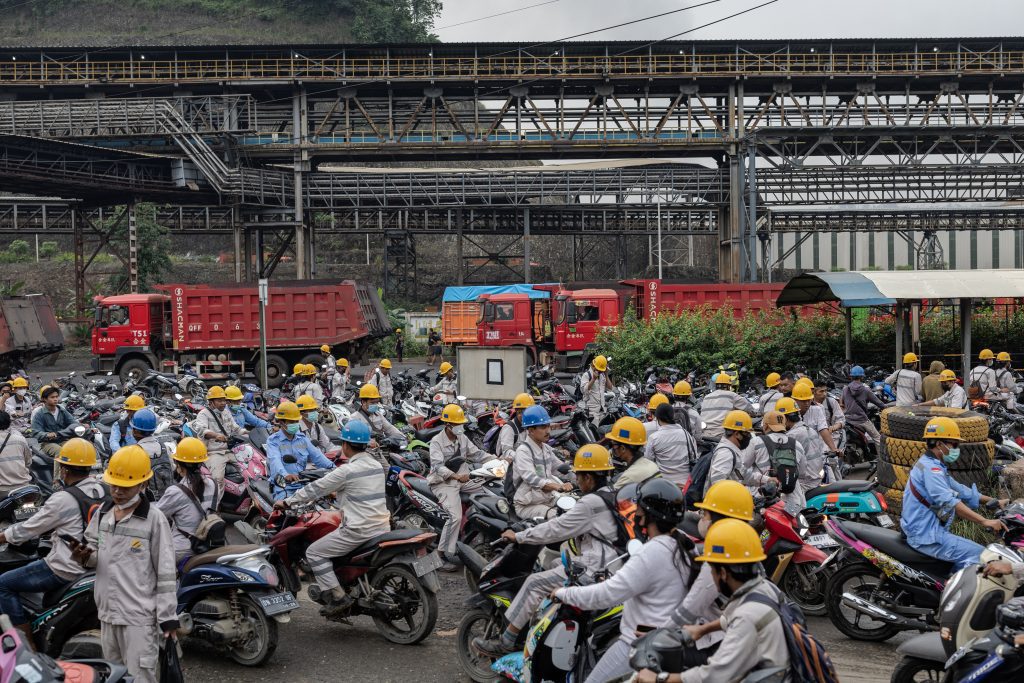
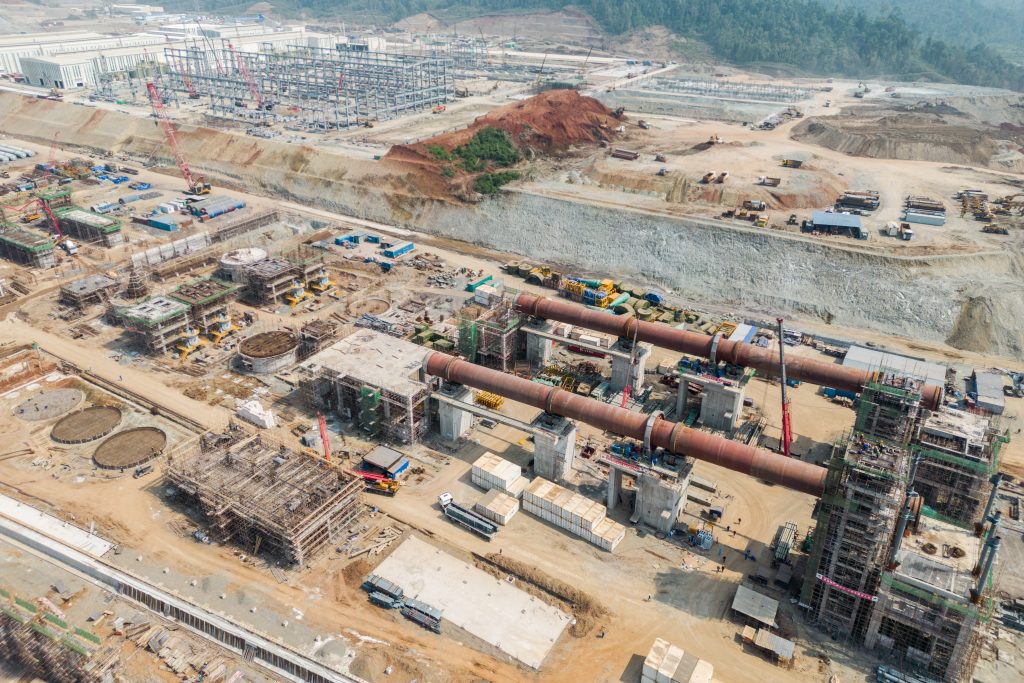
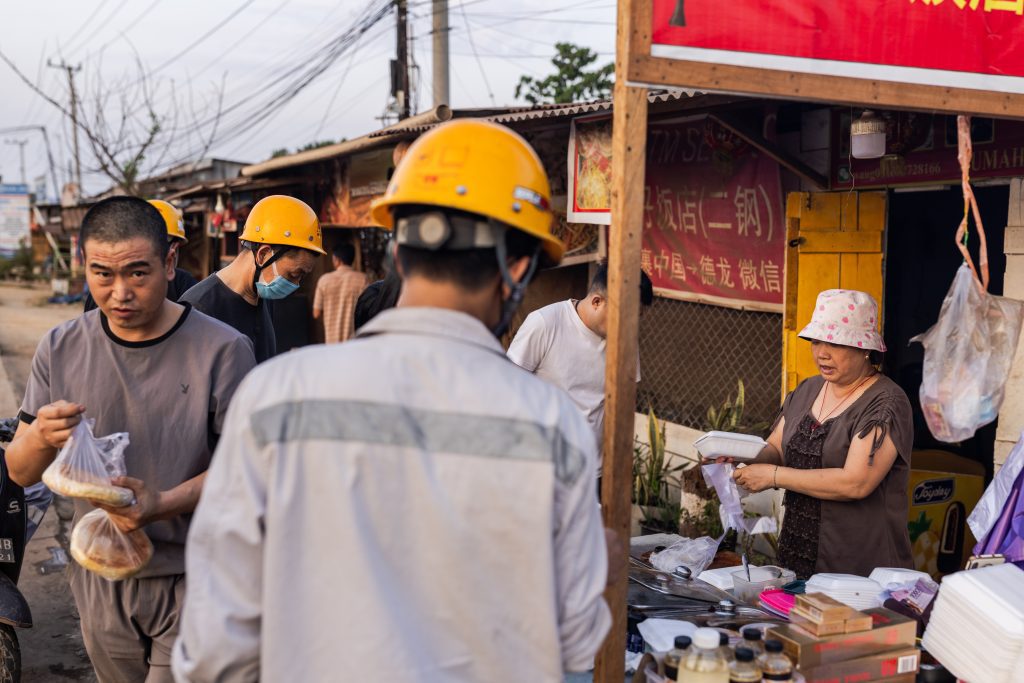
While large Chinese companies dominate processing, they are fed cheap ore by hundreds of smaller, mostly Indonesian-owned mines that dot the rainforest.
In just three years, Indonesia has signed more than a dozen deals worth more than $15 billion for battery materials and electric vehicle production with global manufacturers including Hyundai, LG and Foxconn.
On 28 December 2021, Indonesia unveiled a new nickel smelter in North Morowali Regency of Central Sulawesi. It has been equipped to process 13 million tons of nickel ore annually. Indonesian President Joko Widodo said that the new ferronickel-producing smelter is expected to increase the nickel ore’s value by 1400%.
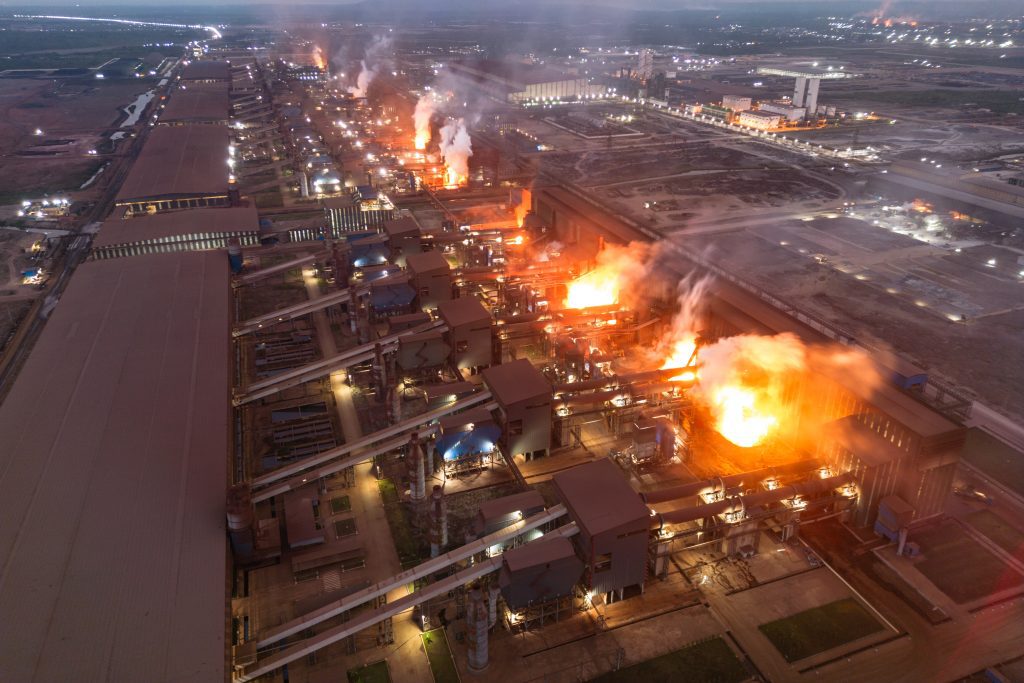

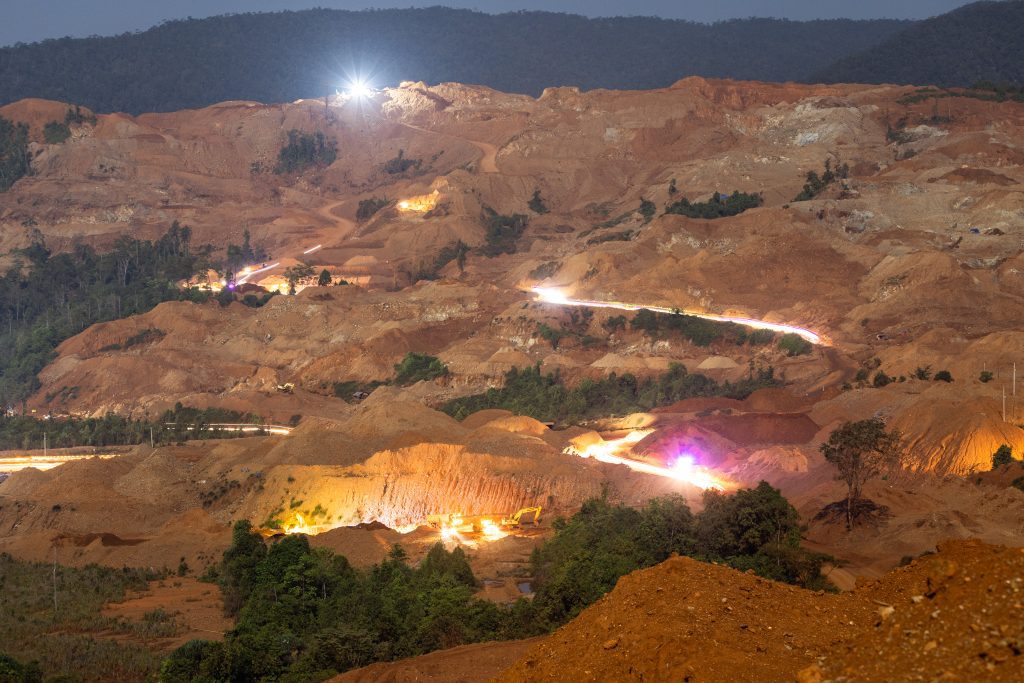
Industrialization has been Joko Widodo’s focus throughout his presidency, as he pushes to turn the resource-rich country’s main export commodities from raw minerals to high-value-added products.
Nickel, used mainly in stainless steel production, and now batteries, too, have been at the centre of it all. “Indonesia will become a leading producer of nickel-based products, including electric-vehicle batteries,” Widodo said in June, 2022 at the groundbreaking ceremony for an LG-led consortium’s battery material facility in the Batang Integrated Industrial Park, in Central Java province. “This is a golden opportunity to develop a green economy for the future.”
After sunrise in Labola village, I documented thousands of workers in using yellow helmets and dust-stained workwear pack its ramshackle, pothole-ridden main road. The mass of traffic crawls toward the Indonesia Morowali Industrial Park, better known as IMIP, the world’s epicentre for nickel production.
IMIP primarily processes nickel ore for stainless steel but now is increasingly producing higher-grade nickel for electric vehicle (EV) batteries.
Years ago, Labota was a fishing village; today it’s been subsumed into a sprawling city centred around IMIP, a $15 billion, 50 factories sprawling across nearly 10,000 acres (4,047 hectares). You can see walls surrounding the industrial complex containing steelworks, coal power plants, and manganese processors, with its own airport and seaport. Built as a joint venture between Chinese and Indonesian industrial companies, it is at the heart of Indonesia’s push to supply the electric vehicle market with nickel, a core component of batteries.
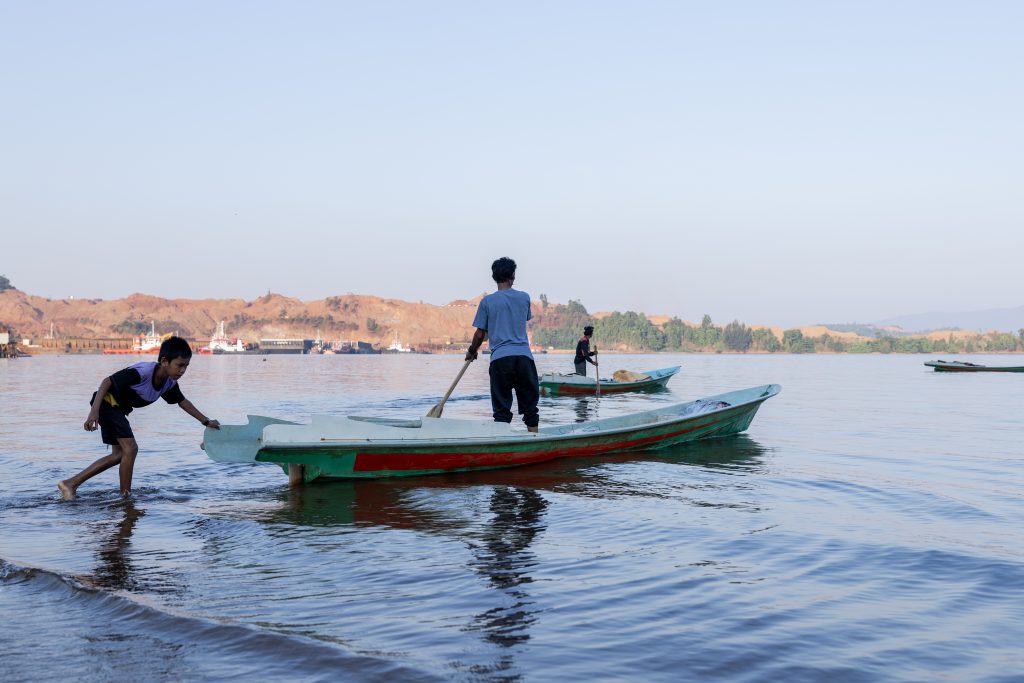
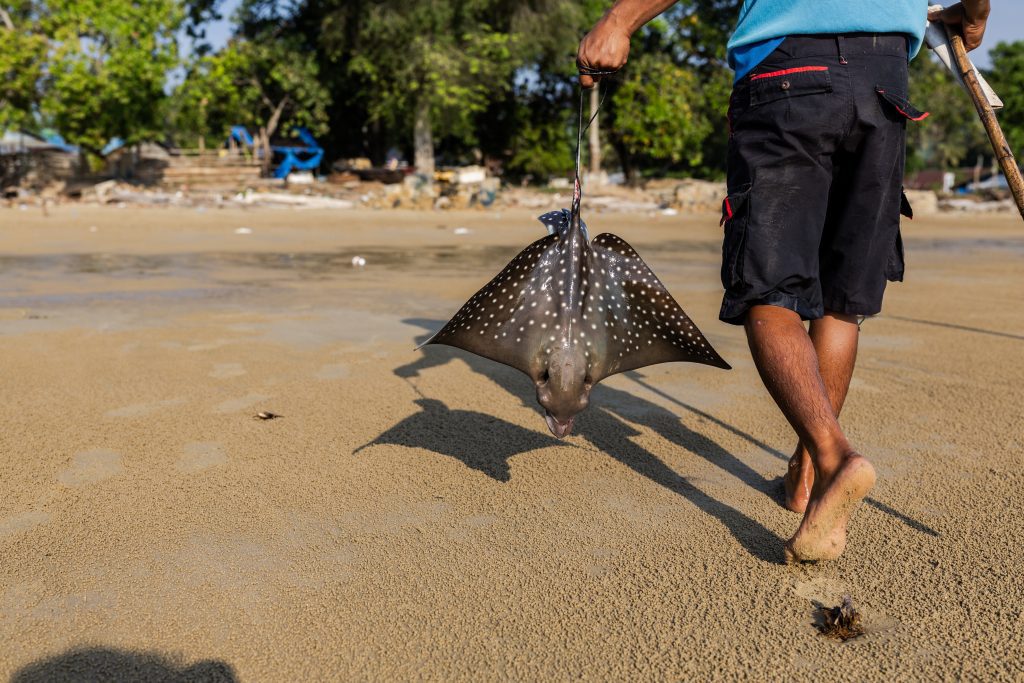
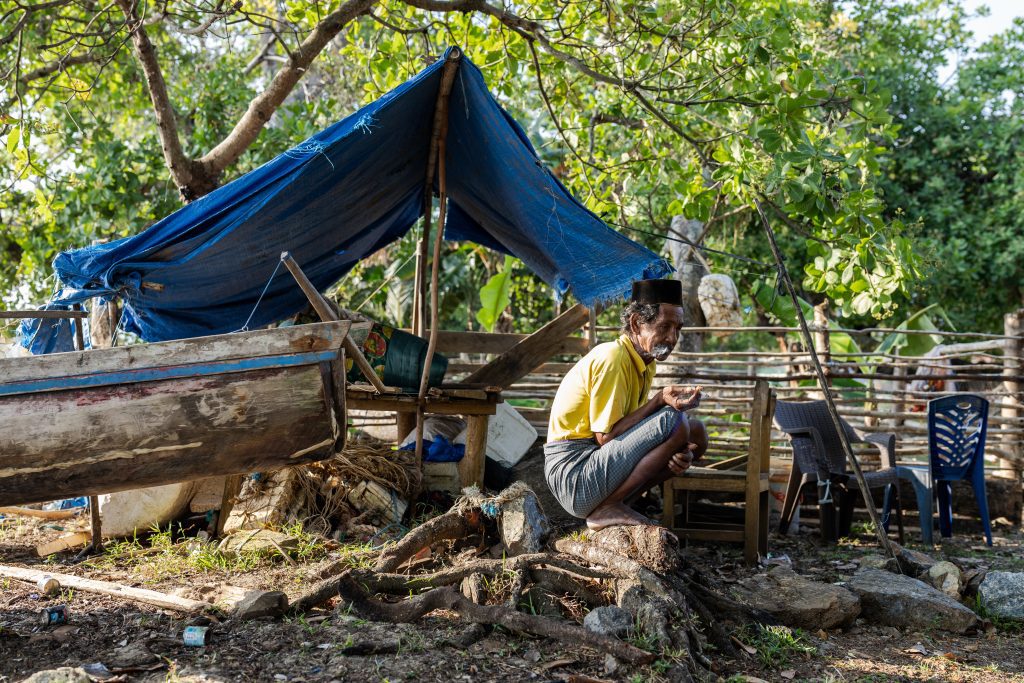
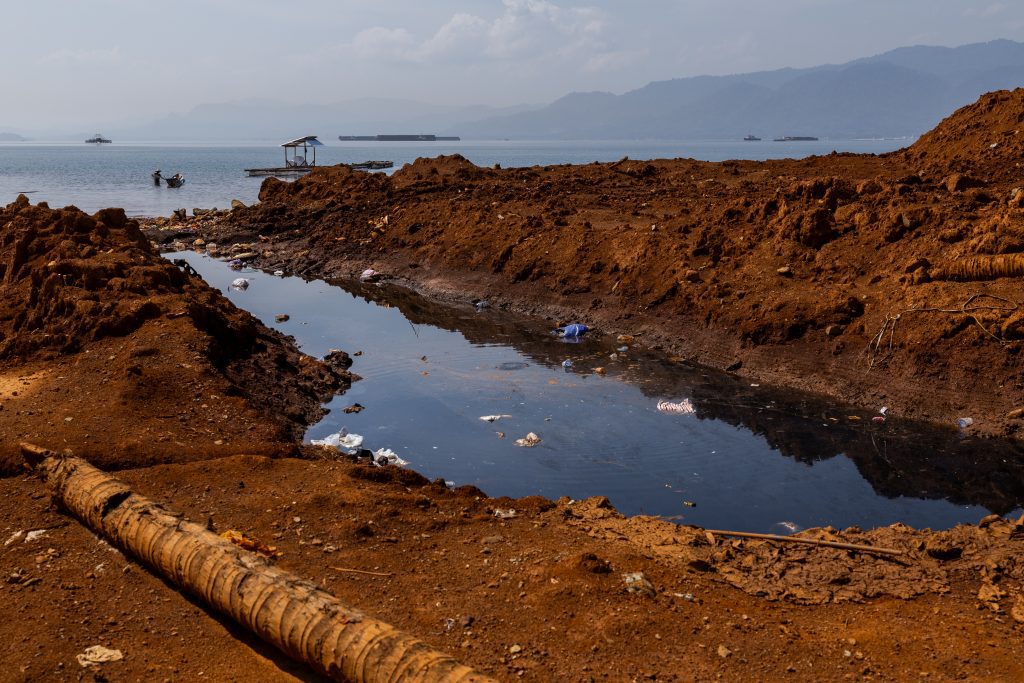
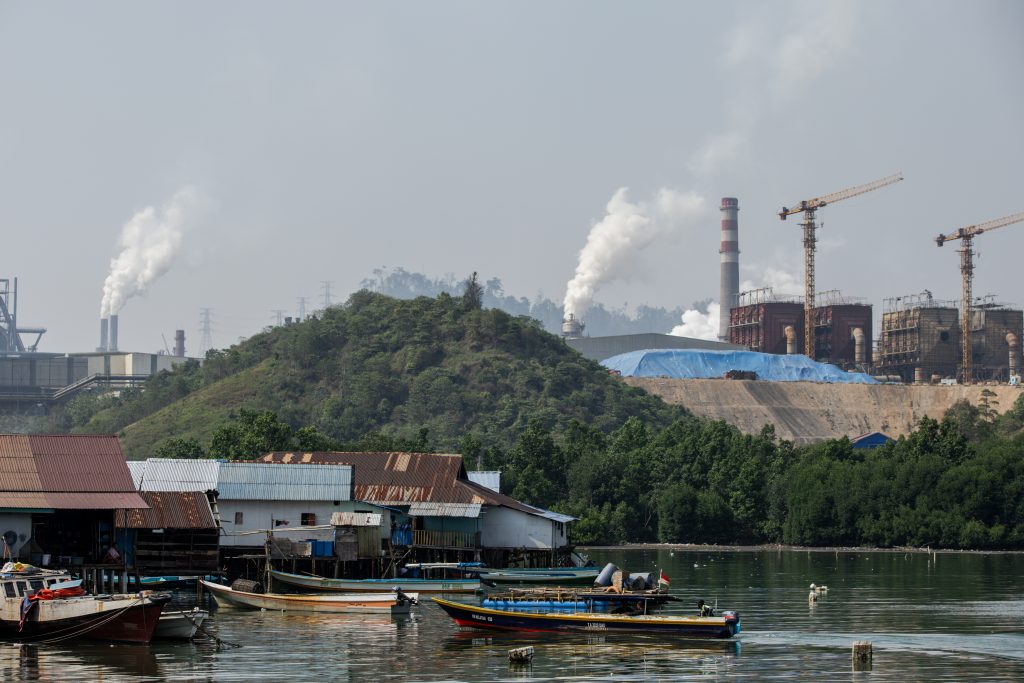
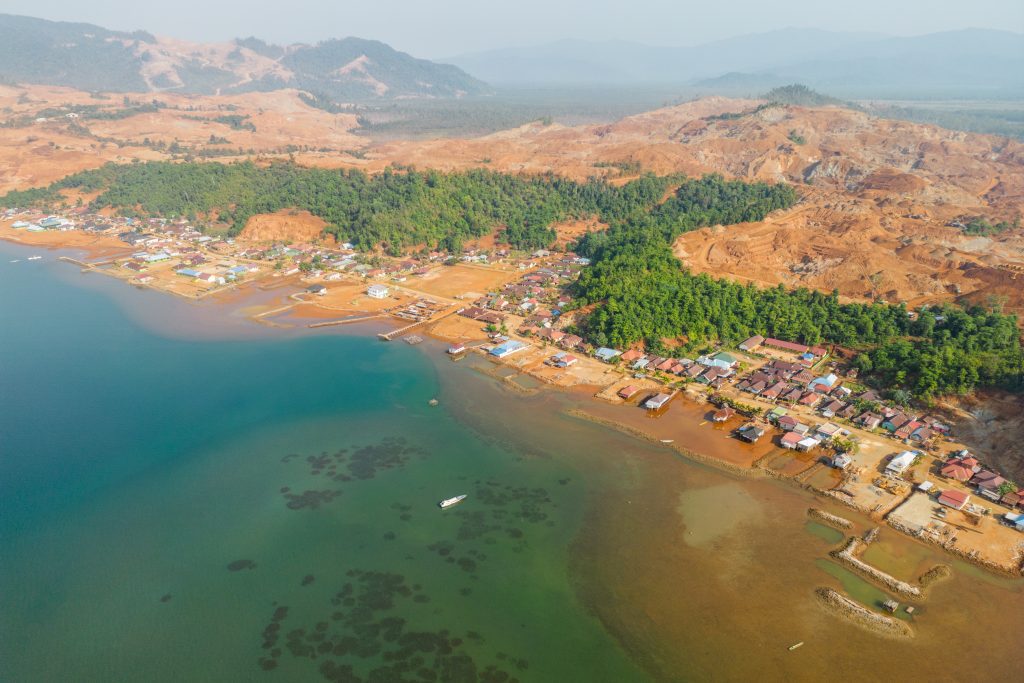
In Labota village, there is also an Islamic school called Madrasah Tsanawiyah Negeri (MTSN), which has a coal plant operating just behind it. The student learns by breathing coal air, which is very risky for their health.
According to a report by German policy lobby group Rosa-Luxemburg-Stiftung (RLS), the nickel-processing factories at IMIP pollute the air by spewing out sulfur dioxide, nitrogen oxides, and coal ash — particles that are “finer than beach sand and can be extremely harmful when inhaled.”
The agreement was announced in 2013 by Indonesia’s then-president, Susilo Bambang Yudhoyono, and President Xi Jinping of China for the Morowali Industrial Park. China Development Bank provided a loan of more than US$1.2 billion.
According to Indonesia’s Manpower Ministry, IMIP had 28,000 employees in 2019 and 43,000 in 2020. That number has now grown to around 66,000.
Roughly 6,000 workers from China live in dormitory blocks, after the afternoon shift ended at 5 p.m., workers from China left the nickel ore processing complex or smelter of Obsidian Stainless Steel in Morosi, Konawe Regency, Southeast Sulawesi. Some were dressed casually or were in uniform, while others were neatly dressed, and a few others looked shabby and covered in mud. They headed straight for a makeshift market or to eat at the Chinese restaurant on the roadside in front of the smelter.
The International Energy Agency (IEA) predicts global demand for the metal will grow at least 65 percent by 2030, and EVs and battery storage are set to take over from stainless steel as the largest end user of nickel by 2040.
The Sulawesi coastline, in the southeast of the country, has borne the brunt of environmental destruction from the mines.
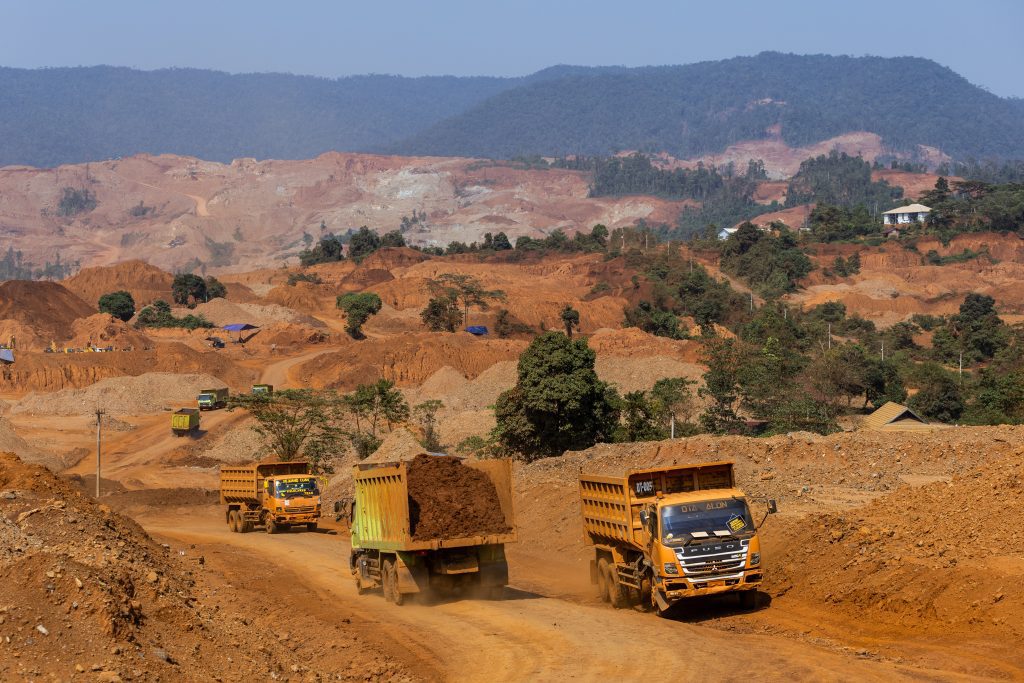
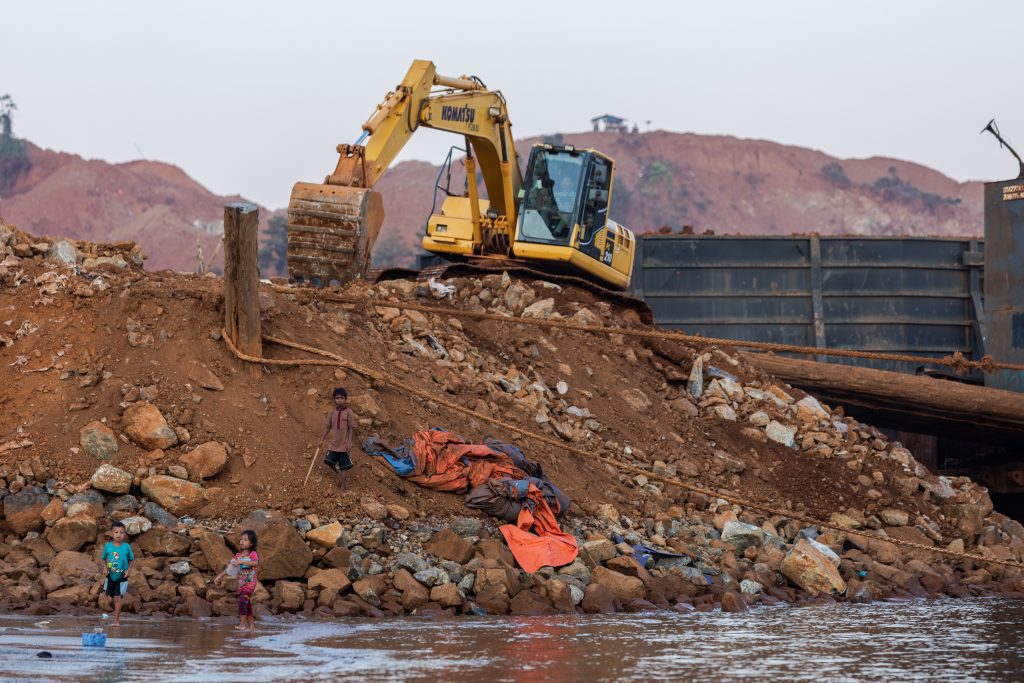
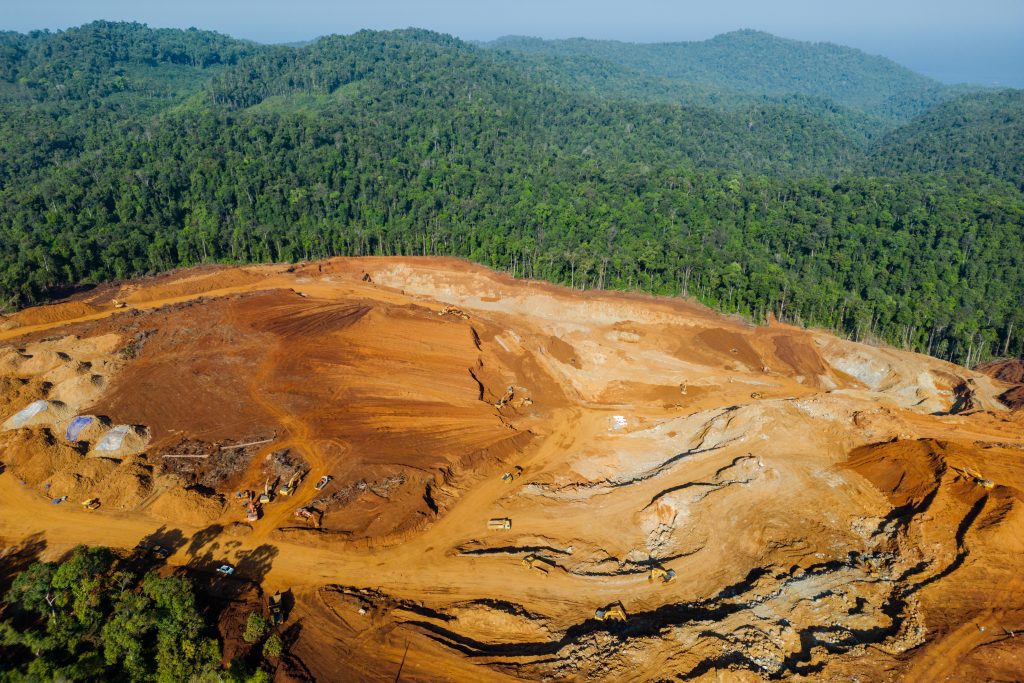
Here on North Konawe in Southeast Sulawesi, in total, there are three fishing villages around the mining locations. I saw the activity of dozens of excavators dug up reddish soil, loaded the soil onto trucks which took it to the jetty and unloaded the ore onto barges which took three to four days to the smelting factory, The nickel was headed north to the Morowali Industrial Park and some of the barges leaving the nickel mine were destined south, to the district of Morosi.
According to data from the Indonesian government, about 50 nickel mining companies currently operate in North Konawe Regency.
The small fishing village of Tapunggaya is home to the Bajau people, an indigenous group known for being brave sailors, formidable fishermen and reliable divers who live off the sea.
Fishermen have also suffered from the impact of nickel pollution, having to travel further and further afield to find their daily catch. But fish are harder to catch in the deeper water and fishermen have to spend more money on petrol.
At Tapunggaya, a village’s fishermen on the North Konawe where the site for mining, an old man told to me that the pollution has destroyed their livelihoods at sea. “There’s no fish here anymore,” says Alwi, a 78-year-old fisherman sitting next to the boat.
Added Alwi “Children also suffer from respiratory problems due to the very severe air pollution here, which is very disturbing to live in a place around the mining locations. The waste and pollution from mining have been killing us slowly.”
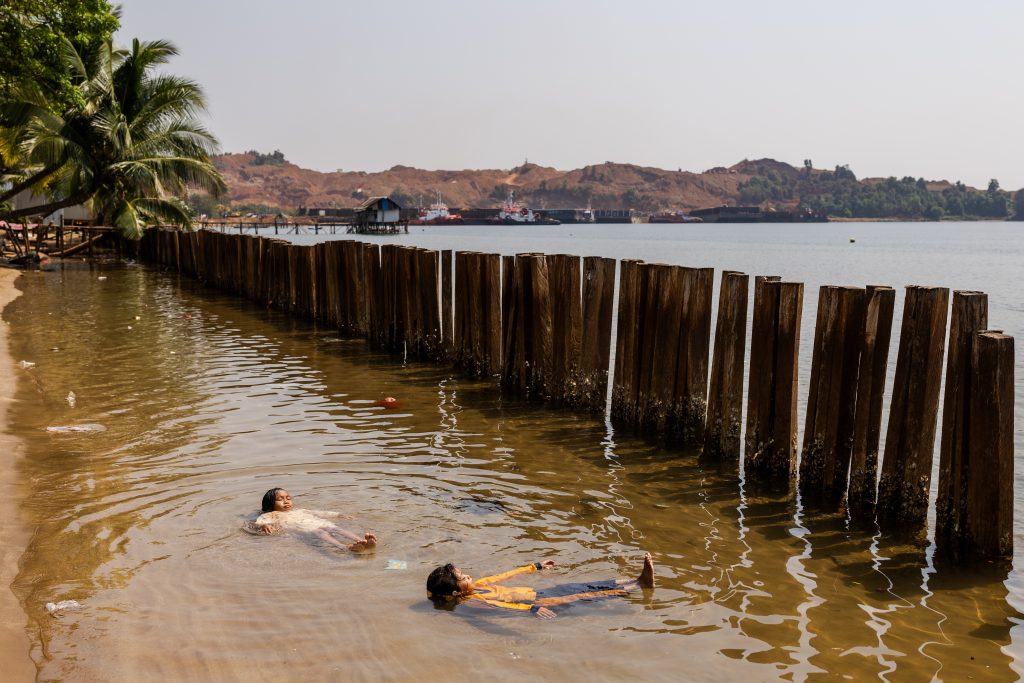
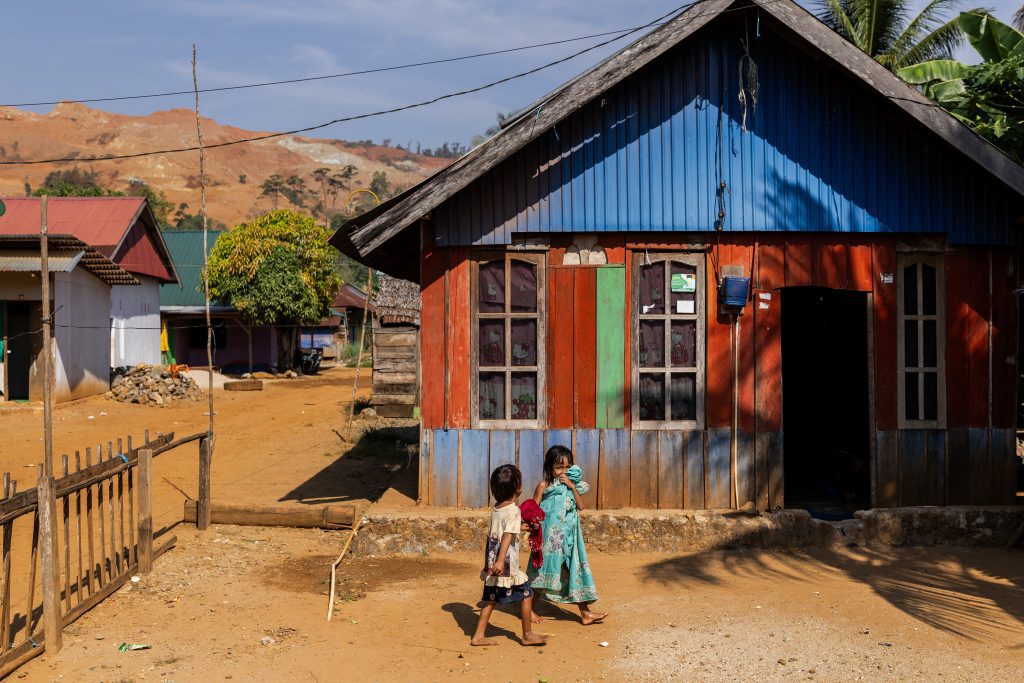
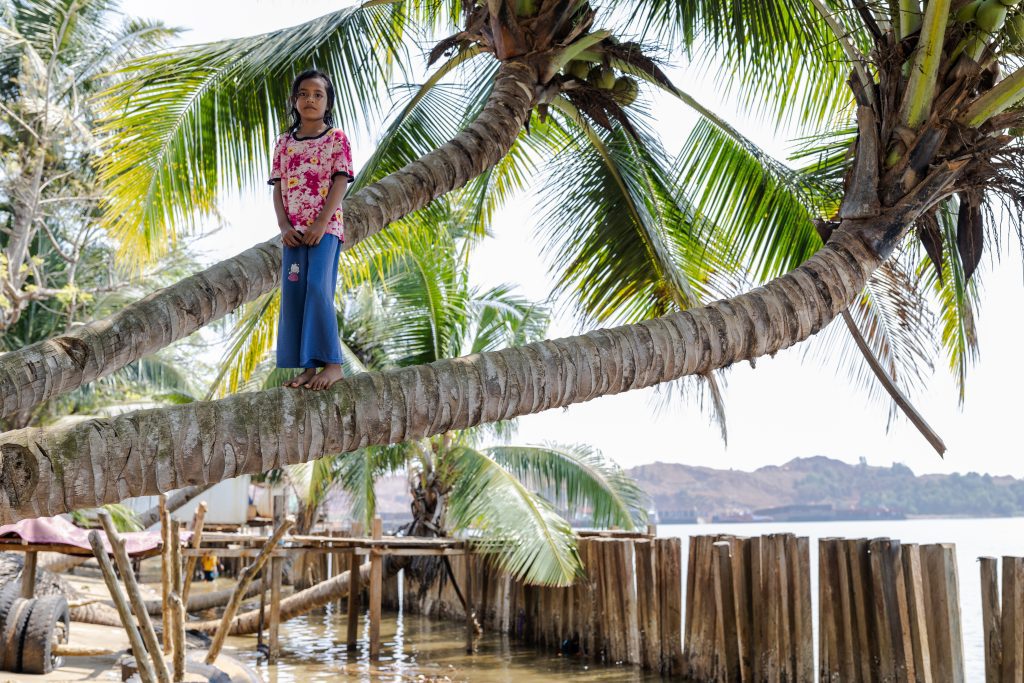
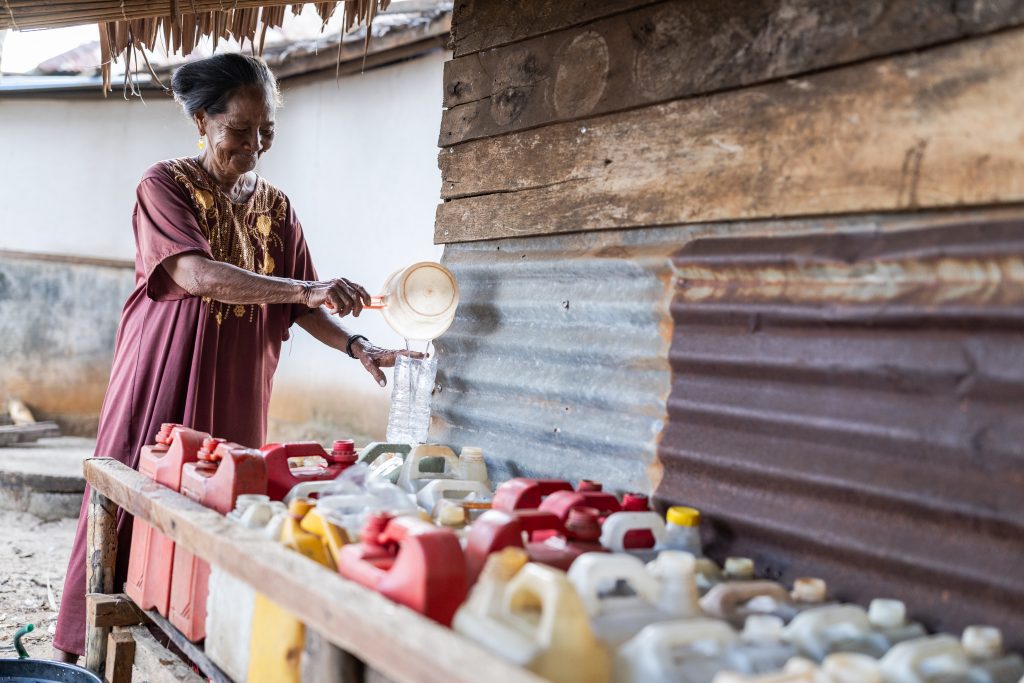
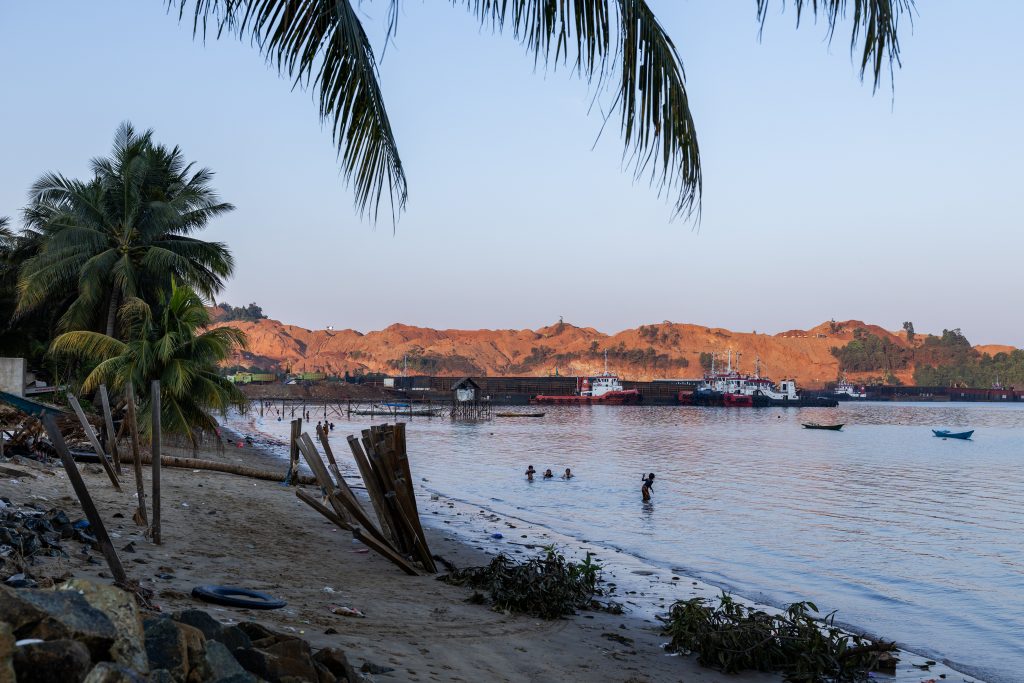
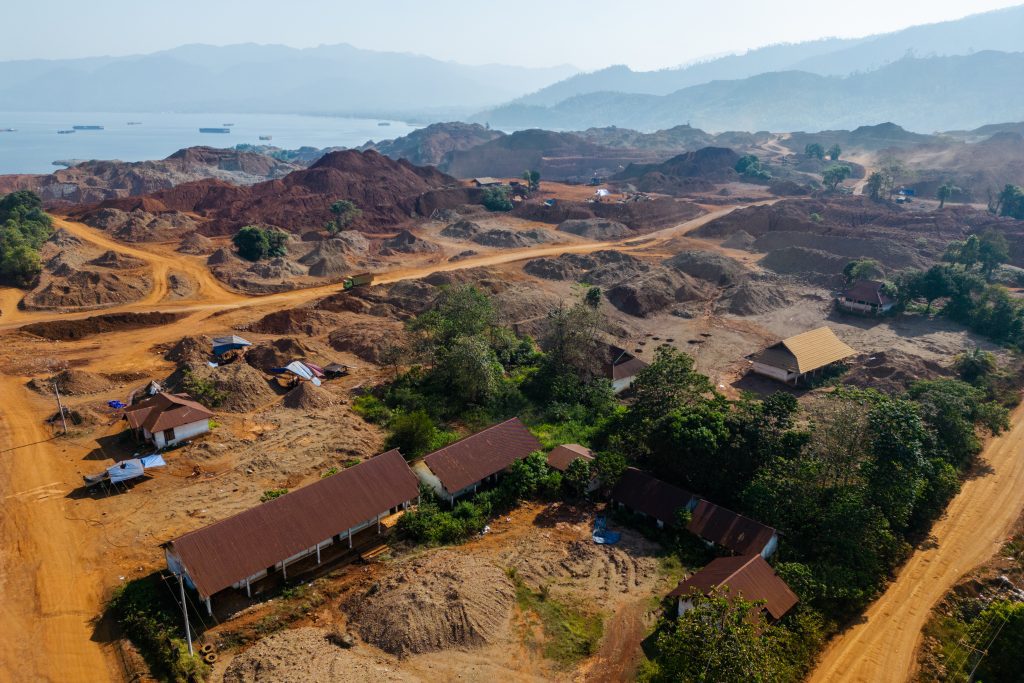
Other fishermen said, Now, the water at the sea has not just turned murky but often becomes so hot that it causes the fish to move away. “We have to drive the boat at least two hours away and probably bring home just two kilograms of fish after a long day at sea”, Mamat (32) told me during a visit to his village in late October.
The coastline, once dotted with picturesque fishing hamlets, has been abandoned. Sandy beaches are discolored with a kaleidoscope of ore pigments and dotted with jetties where barges wait to deliver nickel ore.
Mining activities for EV battery materials leave deep scars on the landscape. In North Konawe, it has meant the disruption of local environments and traditional ways of living for local communities, who face their lands being transformed.
Government data shows that in 2022 there were at least 21 floods and mudslides in Southeast Sulawesi. Between 2005 and 2008, before the proliferation of mines, there were two to three per year, according to the National Agency for Disaster Countermeasures.
In order to mine nickel, large areas of trees are cut down and the land is excavated to create open pits. With the roots of the trees no longer present to stabilise the ground, when it rains earth is more easily swept away.
Besides deforestation, other environmental hazards of expanding mining operations include pollution of water streams and fishing grounds. Pollution risks are there because to transform nickel ore to battery grade nickel, complex and less conventional methods are being used, such as High-Pressure Acid Leaching (HPAL) which produces toxic waste.
Further, the potential carbon emissions from the expansion of mining operations are significant, considering that the smelting process is highly energy intensive and most smelters in Indonesia are powered by coal.
The expansion of the nickel and electric battery industry must come with the appropriate environmental and social standards that minimize environmental and human rights impacts.
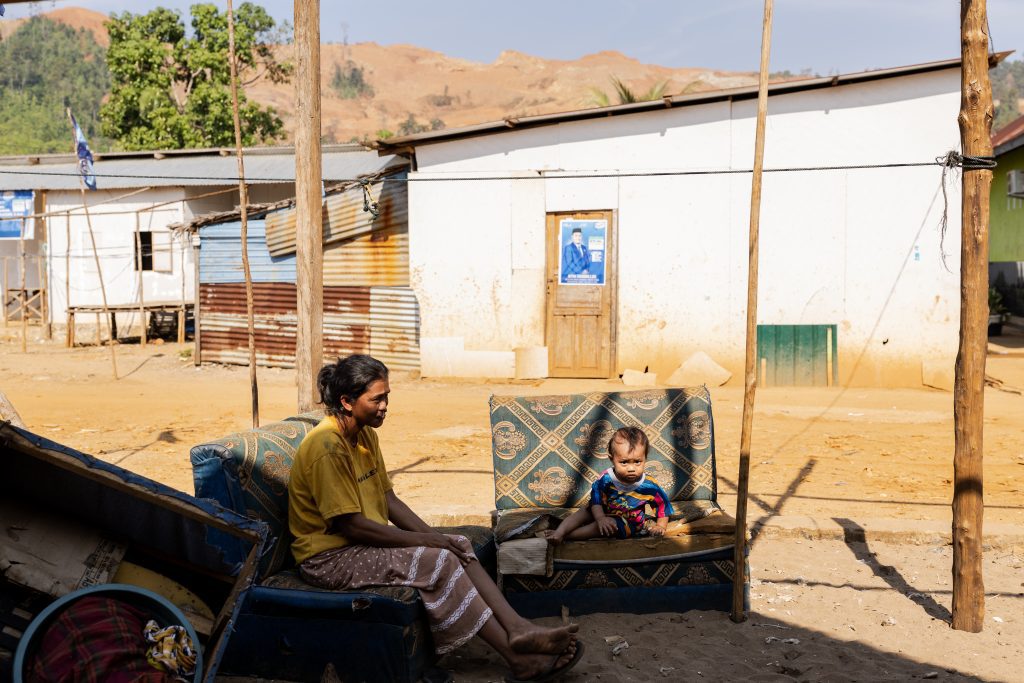
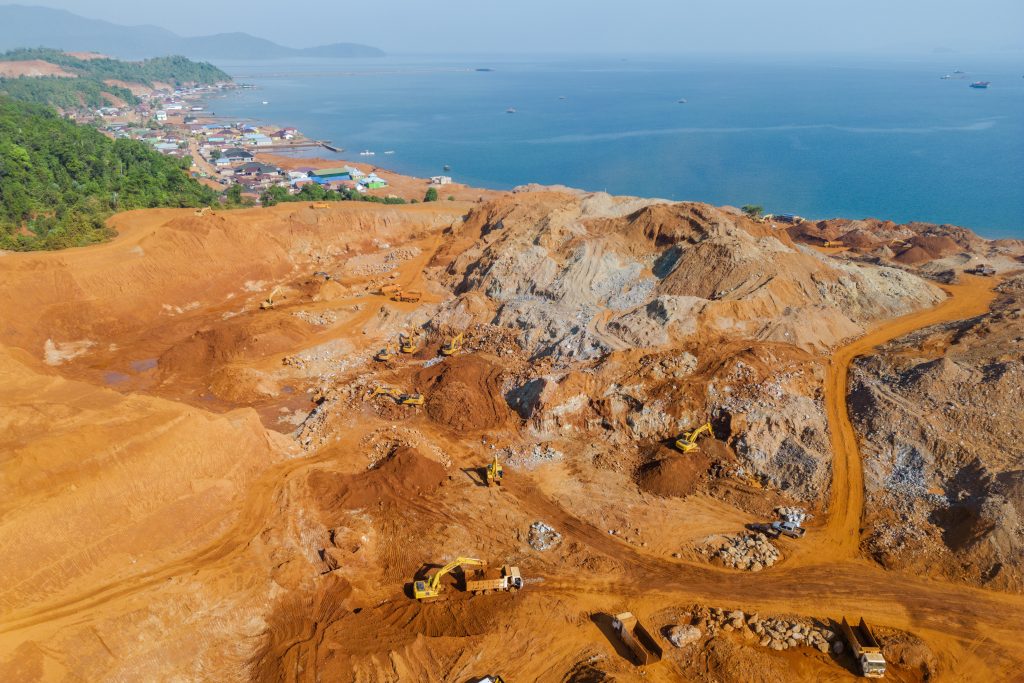
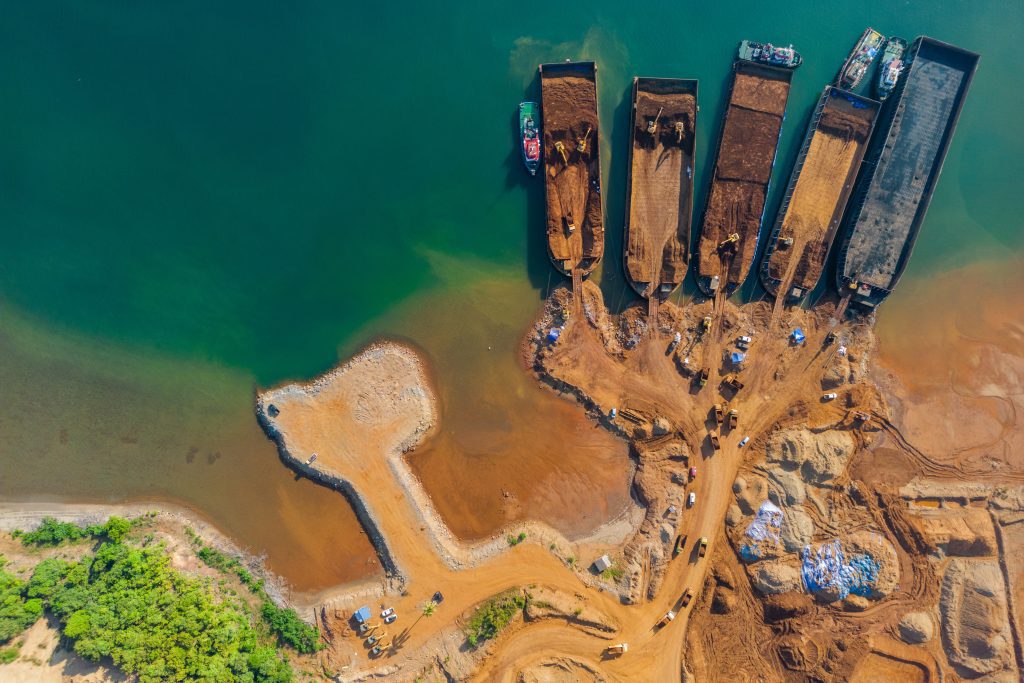
Garry Lotulung is a freelance photojournalist and documentary photographer based in Jakarta. Lotulung has specialized in stories and about the human condition, social change, and environmental crises. Read more about his work: https://garrylotulung.com/
IUCN NL’s work to protect Sulawesi’s biodiversity
In collaboration with our partner organisation Alliance for Tompotika Conservation (AlTo), IUCN NL has been actively engaged in Sulawesi for over a decade. Currently, as part of the projects Forests for a Just Future and Bottom Line, our efforts are focused on the protection of Sulawesi’s forests and its endangered species, including the iconic maleo bird against nickel mining. We do this together with our partners AlTo, Auriga Nusantara and other national and international CSOs.